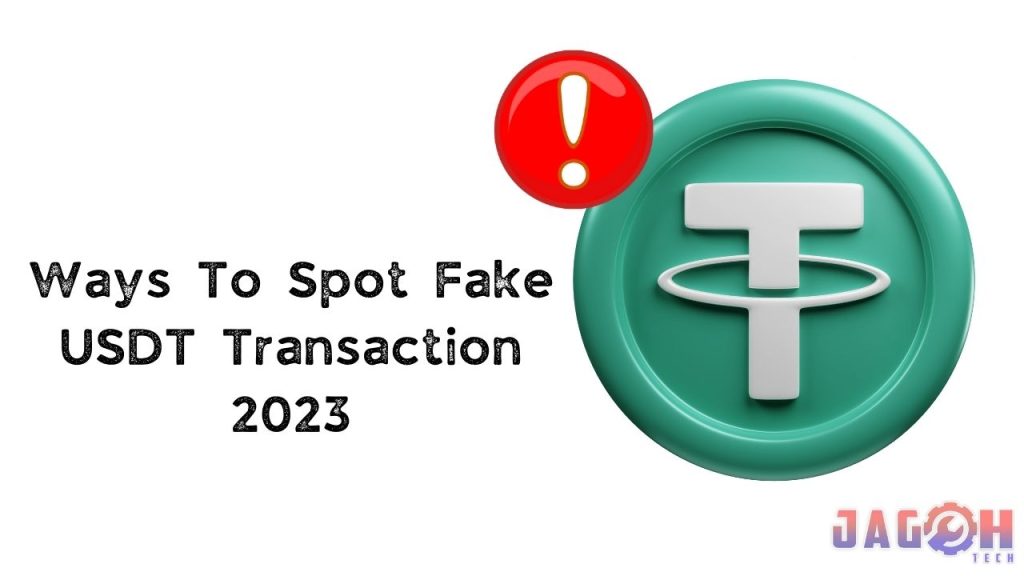Cryptocurrency trading remains at the forefront of online money-making opportunities. Among the myriad of crypto assets traded daily, USDT (Tether) stands as one of the top choices. However, with the growing popularity of USDT comes the unfortunate reality of fraudulent activities attempting to steal users’ funds. It is imperative to be well-versed in spotting fake USDT transactions to safeguard your investments and assets.
USDT, often referred to as Tether, is a stablecoin designed to maintain a 1:1 peg with the US dollar. This means that 1 USDT is always equivalent to 1 US dollar, offering a level of stability that other cryptocurrencies may lack.
Table of Contents


The purpose of USDT is to mitigate the inherent volatility of the cryptocurrency market, where prices are dictated by supply and demand forces.
USDT’s ability to provide stability in the crypto market has made it a top choice for traders and investors, boasting a substantial market capitalization of over $83 billion.
However, the safety of USDT transactions has become a cause for concern due to the increasing number of crypto scams plaguing the market. Just as you exercise caution when conducting fiat transactions to prevent falling prey to malicious entities, it’s equally crucial to remain vigilant when dealing with USDT.
In this article, we will guide you through the process of identifying fake USDT transactions during your trading activities.
1. Verify the Transaction Address
Every USDT transfer has an associated contract address that varies depending on the network used for the transaction. These contract addresses include:
- ERC20 network: 0xdac17f958d2ee523a2206206994597c13d831ec7
- TRC20 network: TR7NHqjeKQxGTCi8q8ZY4pL8otSzgjLj6t
- BEP20 network: 0x55d398326f99059ff775485246999027b3197955
- EOS blockchain network: 0x4bb6826e1db889ae30657fa19e1a80d9ae332da5
- OMG network: 0x140427a7D27144A4cDa83bD6b9052a63b0c5B589
A fake USDT transaction will involve a contract address that differs from these standard addresses. Therefore, it’s crucial to ensure that the USDT contract address you are using matches the correct one for the network. Pay attention to every character in the address, as even a single addition or omission can indicate a fraudulent transaction. Legitimate USDT transactions consistently utilize the same contract address across various networks.
To minimize risks, consider using a trusted platform like Prestmit when selling USDT in Nigeria, as it offers a secure environment compared to some peer-to-peer (P2P) trading platforms.
2. Check for Fully Diluted Market Cap
The fully diluted market cap is a crucial metric for assessing the total value of a token, calculated by multiplying its price by its total supply. This metric applies to all cryptocurrencies, including USDT. When viewing USDT in your wallet, it’s essential to check whether the fully diluted market cap is displayed. A fake USDT transaction may not provide this information, which should serve as a red flag during your transactions. Be vigilant in ensuring this important indicator is available when conducting USDT transactions.
3. Confirm Fund Addition to Your Wallet
Upon completing a USDT transaction, it is crucial to confirm that the transferred USDT has been added to your wallet balance. This verification process mirrors the vigilance required when detecting fake bank alerts. If the value of the USDT tokens sent is not reflected in your wallet balance, it could indicate a fake USDT transfer. Ensure you are aware of your wallet balance before initiating a USDT transaction to verify the addition of funds accurately.
4. Verify the USDT Logo
While seemingly straightforward, the color of the USDT logo is an essential detail to verify. The official USDT logo is green, and any deviation from this color should raise suspicion. Fake USDT transactions may use a grey-colored logo in an attempt to confuse users. Always confirm that you are dealing with the authentic USDT logo to ensure the legitimacy of your transactions.
5. Look for Token Information
Genuine USDT transactions typically include essential information such as 24-hour trading volume, circulating supply, and market capitalization. These details provide valuable insights into the token’s market performance. However, a fake USDT transaction may omit this information, signaling a potential issue. Exercise caution when encountering USDT transactions that lack these critical details.
6. Scan the Transaction
After completing a USDT transaction, the other party should provide you with a transaction hash—a unique alphanumeric string generated when initiating a cryptocurrency transaction. This hash serves as an identifier used to track transactions on the blockchain. It is imperative to have access to this transaction hash and use an Ethereum network explorer like etherscan.io to examine the transaction details. This step enables you to verify the authenticity of the USDT transaction, distinguishing between genuine and fake transactions.

